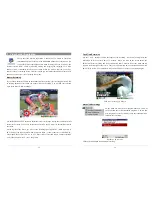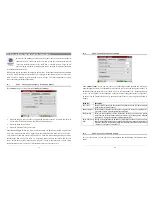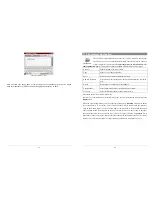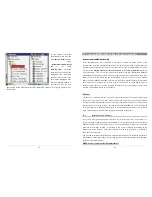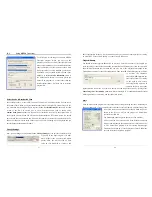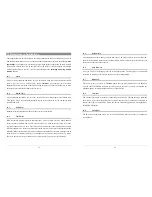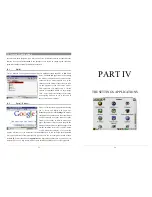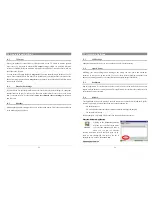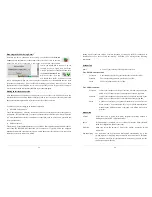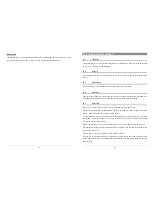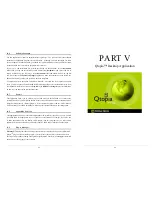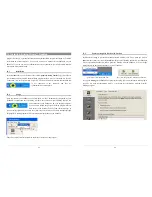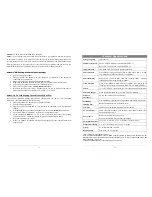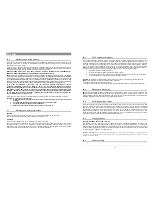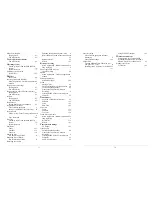
47
12.2
Using MPEG4 Translator
To the left you see the image of the main MPEG4
Translator program. When you first run the
program, you will be notified if the required codec
has not been installed yet. You should download the
codec and install it on your computer. If the Virtual
Dub program has not been installed, you will also
be notified, and you should install it (found on the
PMA430 in the
Archos\PC installation
folder or
the Virtual Dub website). If you have placed the
Virtual Dub program in a folder other than the
installer default folder, it will ask you to locate the
program file.
Select Source & Destination Files
In the example above, a source file “24 hours of Lemans.avi” has been selected. You can see on
the bottom of the window its original characteristics (width 720, height 576, frame rate 30). Next,
you must then tell the program where to place (button:
Set Destination file
) the newly recoded
version of the file. You should give it a new descriptive name, such as shown above
Lemans_PMA_400.avi.
Make sure you add the .avi extension. Don’t worry, the original file will
not be erased because the new file will have a different extension. If for some reason, you should
have selected the same extension and file name (for example to create a file optimized for the TV
and one for the LCD screen based on the same source file), a warning will be displayed and you
should change the destination file name.
Change Settings
Next, you can change the parameters (button:
Change Settings
) of the encoder to adjust the level
of quality of the final image. As for MP3
music, higher video bit rates mean higher
quality video, but will also take up more
space on your hard disk. A setting of 500
48
kbps is appropriate for the LCD screen; 900 kbps will give you a nice looking image for viewing
on a television. For near DVD quality, you can set it up to 1200 kbps.
Target & Priority
You should select the target as PMA430. You will see a
Priority
box appear. If for example you
are re-encoding a video file that is 800x600 in resolution and 30 frames per second, this is beyond
the maximum resolution that the PMA430 can play (see Video playback information in the
Technical Specifications at the end of this manual). Thus, the MPG4 Translator program will have
to decrease the resolution.
Choosing
LCD
optimizes the
final video format for viewing
on the built in LCD screen.
Choosing the
TV
option will
optimize the movie to keep the
highest possible frame rate. You can see what the size and frame rate will be by looking at the
Video Image Size : Destination
parameters. When choosing
TV
, it is understood that the output
will be optimized for a television, and not the built-in screen.
Start
Click on
Start
and the program will call Virtual Dub to start processing the video. Depending on
the power and speed of your computer, this could take at least
real time (a 60 minute long video
re-encoded in about 60 minutes) but probably
much longer. As
shown to the left, you will see the progress as Virtual Dub
processes the video file.
The Start button might be greyed out for one of two reasons:
1) The source file is not a true AVI file. Even if the file name ends
with .avi, the internal file data determines if it is truly an AVI file.
2) The Virtual Dub program was not located when Mpeg4
Translator was started up. Close the program, restart it, and make
sure you locate the Virtual Dub program.









